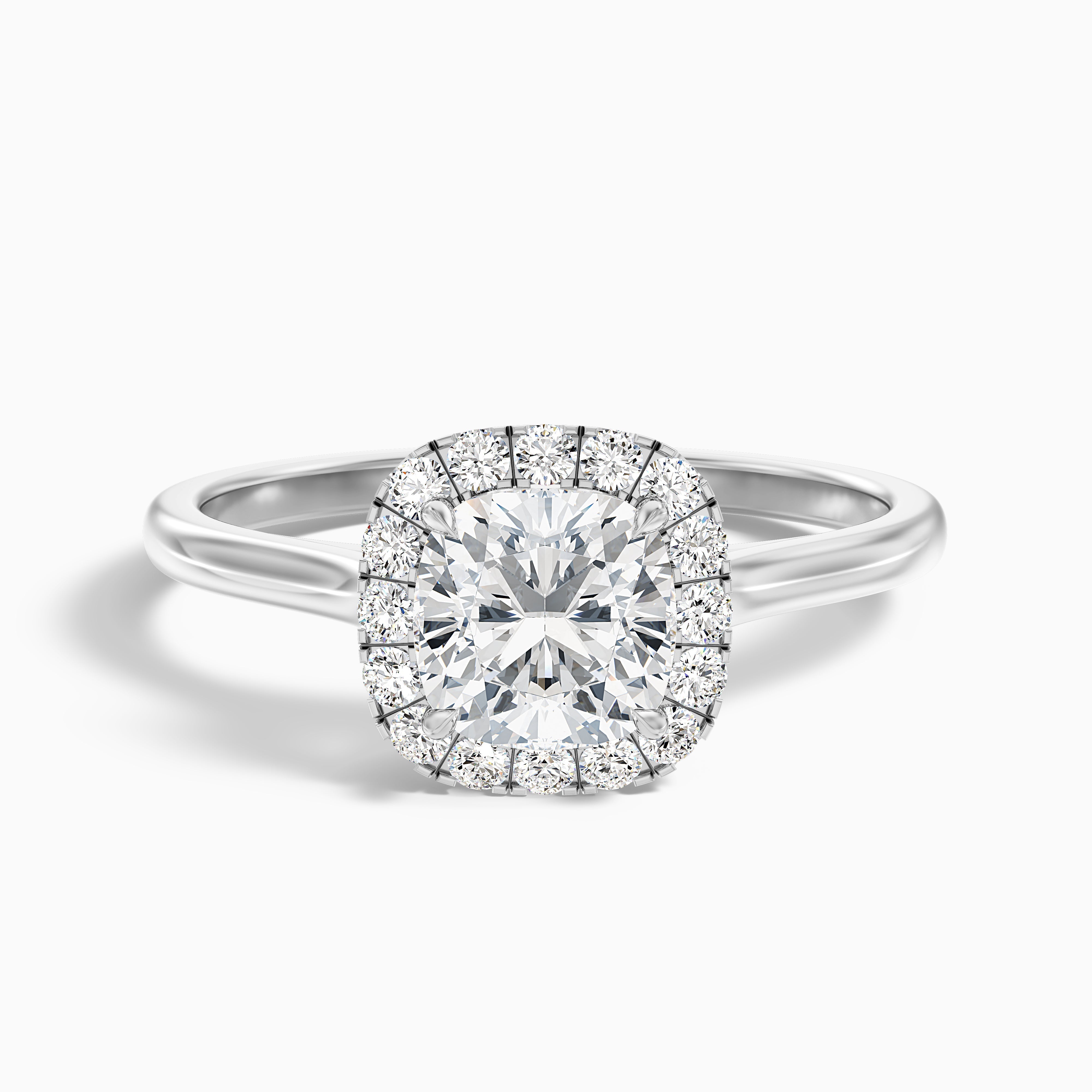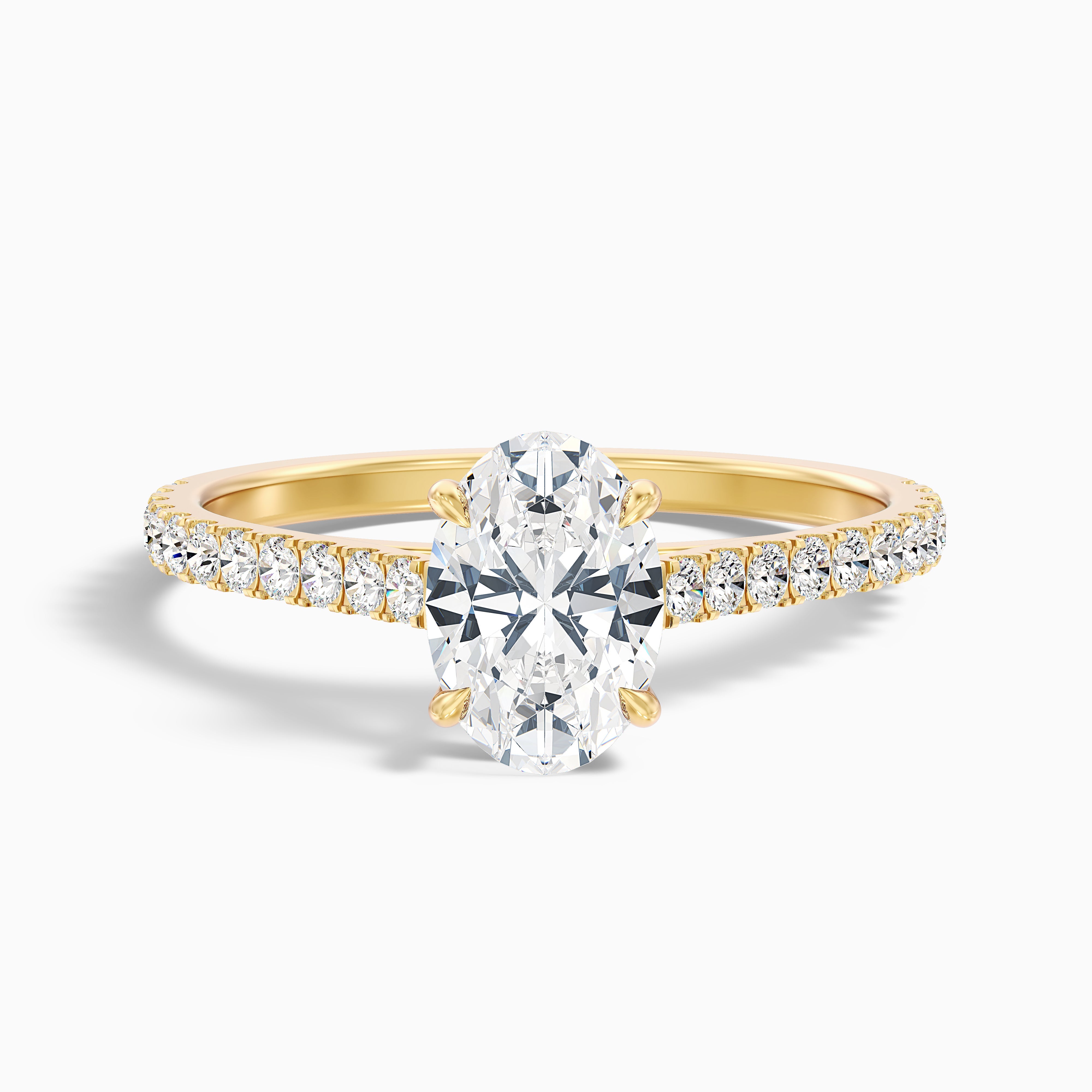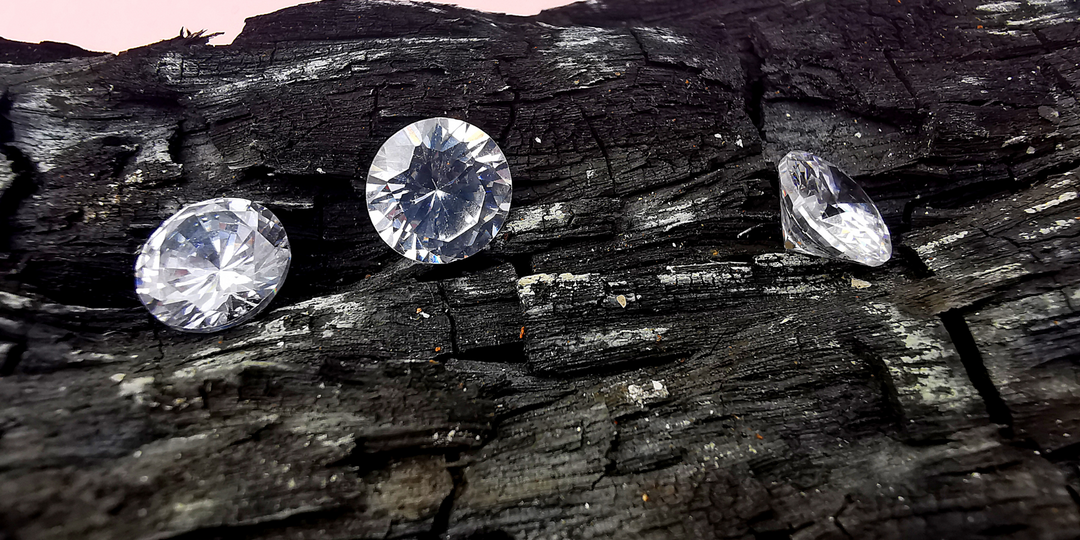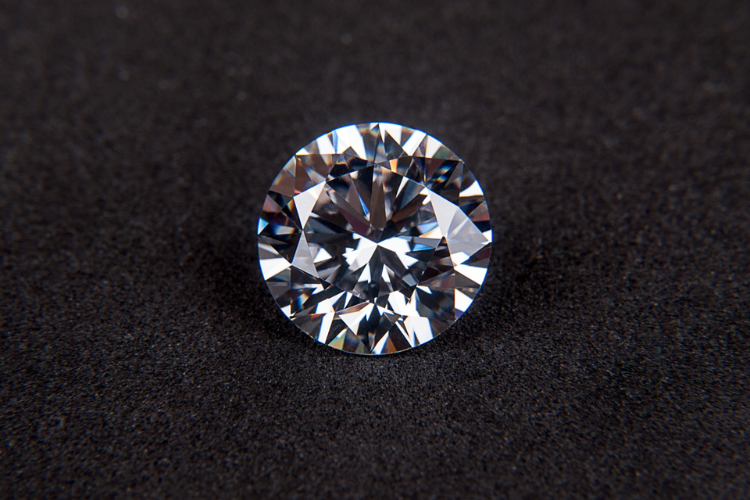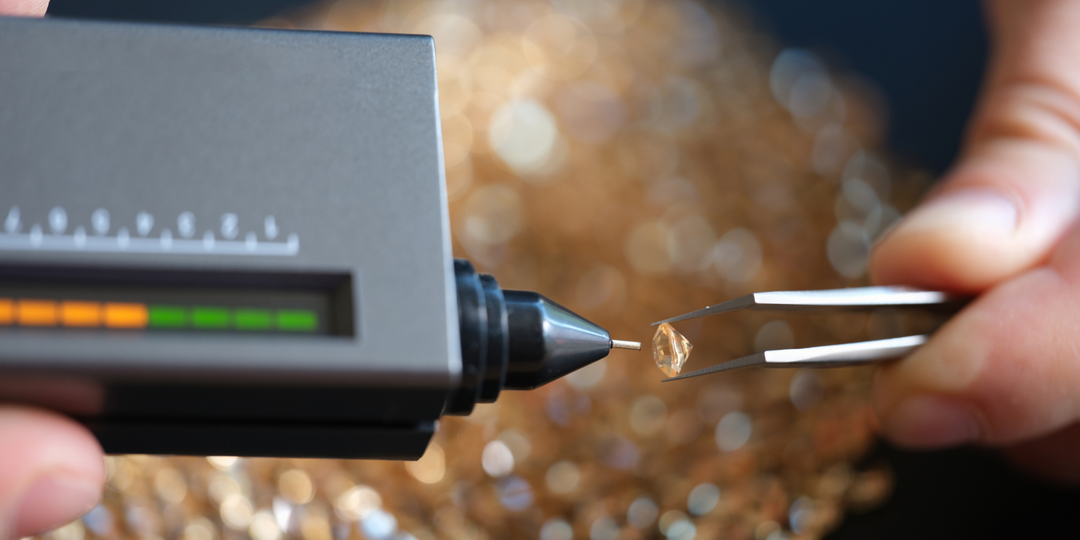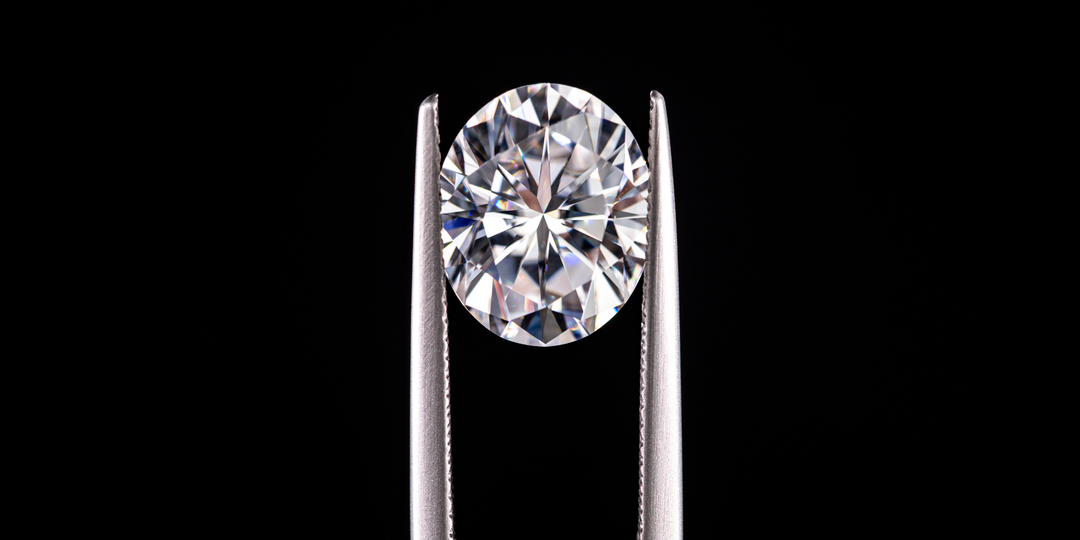A Complete Guide to Lab Diamond Color
Lab grown diamonds are gaining popularity among engaged couples, jewelry lovers, and eco-conscious shoppers. Lab grown diamonds possess the same physical and chemical properties as natural diamonds. When picking out lab diamonds, one important thing to think about is their color. In this guide, we'll dive into everything you need to know about lab diamond color—how they're graded and what to keep in mind when selecting the perfect shade for your gemstone.
What is the Diamond Color?
Lab grown colored diamonds refer to a diamond's hue or tint. Diamond color is one of the four big factors (the 4Cs) we use to determine a diamond's quality and value. While most of us think of diamonds as colorless, they actually come in all sorts of shades, from soft yellows and browns to eye-catching pinks, blues, and greens.
When we talk about diamond color, we're really chatting about the absence of color. The less color a diamond has, the better it ranks in terms of value and quality.
The GIA (Gemological Institute of America) D-to-Z Color Scale is the most widely used system for grading diamond color. Here’s a brief overview:
- D-F: Totally colorless. These diamonds are super rare and pricey.
- G-J: Almost colorless. They have a hint of color but are still top-notch and offer great value.
- K-M: Faint color. These diamonds have a noticeable tint, usually yellow.
- N-R: Very light color. The tint is more visible here
- S-Z: Light color. These have a clear tint, often yellow or brown.
Diamonds can also come in a variety of other colors, known as fancy colors, which include hues like blue, pink, green, and even red.
How Lab Grown Diamonds Get Their Colors
Ever wondered how lab created diamonds get their vibrant colors? It's all about introducing specific elements during the creation process. Let's break it down:
High Pressure High Temperature (HPHT) Method
The HPHT method is all about mimicking how diamonds form naturally, using high pressure and temperature. By adding certain elements, you can create different colors:
- Nitrogen gives us those beautiful yellow or orange diamonds.
- Boron results in stunning blue diamonds.
- Hydrogen can create some unique hues.
Chemical Vapor Deposition (CVD) Method
In the CVD method, a diamond seed is placed in a chamber filled with a carbon-rich gas. The gas is then ionized, breaking down the molecules so carbon atoms can build up on the seed, forming a diamond. Depending on what gases are added or treatments done after, you get:
- Methane is part of the gas mix.
- Boron is added in for blue diamonds.
- Post-Growth Treatments can give us those rare pink or red diamonds.
Post-Growth Treatments
Sometimes, lab grown diamonds get a little extra treatment to enhance or change their color. Techniques like irradiation and annealing can create colors that are rare in nature, like green or pink.
So, there you have it! These methods let us create a rainbow of colors in lab grown diamonds, making them a versatile and often more affordable choice than naturally colored diamonds.
What is the GIA Scale of Color Grading
The Gemological Institute of America (GIA) came up with the D-to-Z color grading scale, which is what everyone uses to rate diamond color. This scale checks how colorless a diamond is, aiming to find those perfectly colorless gems. Here's a closer look at the GIA color grading scale:
GIA Color Grading Scale
Sure! Here’s a table of the GIA Color Grading Scale for diamonds:
The GIA color grading scale ranges from D (colorless) to Z (light color), with each grade representing a specific range of color appearance.
Why the Scale Starts at D
Back before the GIA came up with this scale, there were all sorts of other systems around that just made things messy and confusing. They decided to kick things off with the letter D to steer clear of any connections with those old grading systems that used A, B, and C.
Grading Process
When it comes to grading diamonds, experts line them up next to master stones of known color under specific lighting and viewing conditions. This way, they can keep things consistent and accurate in the grading process.
Impact on Value
A diamond's color grade plays a big role in its value. The colorless ones (D-F) are the top-tier gems, while those with noticeable color (K-Z) don’t fetch as much. But honestly, the color differences are pretty subtle and often not something you’d catch without a trained eye.
Popular Lab Diamond Colors and Their Appeal
Lab grown diamonds have become increasingly popular due to their ethical production methods, affordability, and the variety of colors they offer. Here’s a detailed look at the most popular lab diamond colors and their appeal:
Colorless Diamonds (D-F)
These diamonds are totally colorless and super traditional. They're the ones everyone wants, falling in the D-F color range. Loved for their purity and sparkle, colorless diamonds are perfect if you’re after a classic, timeless vibe. They let loads of light through, making them extra sparkly!
Near-Colorless Diamonds (G-J)
These diamonds have just a hint of color, often so subtle you can't even see it without a closer look. They’re a fantastic value and are super popular for engagement rings and fine jewelry. Near-colorless diamonds strike a great balance between quality and affordability
Faint Diamonds (K-M):
These diamonds might have a hint of color, from a faint yellow to a light yellow. They're more budget-friendly and a great option if you like a warmer hue in your diamonds.
Fancy Yellow Diamonds
Yellow diamonds come in shades from pale to intense and are known for their sunny, cheerful vibe. Their vibrant color makes them pop, and they're often picked for their warm, inviting look.
Fancy Pink Diamonds
These diamonds show off colors from gentle pastels to bold, rich tones. People love pink diamonds for their romantic and elegant shades; they’re often linked with love and femininity.
Fancy Blue Diamonds
These gems can be anything from a light sky blue to a deep navy, and sometimes you'll even spot hints of green or gray. People love blue diamonds for their soothing and captivating colors, making them truly special and calming to look at.
Fancy Green Diamonds
These diamonds come in shades from light mint to deep forest green. Green diamonds are one-of-a-kind and super rare, so lab grown ones are a great pick. They stand for growth and renewal.
Fancy Orange Diamonds
Orange diamonds come in shades from light peach to deep orange. People love these gems for their warm, fiery tones. They're pretty rare, making them highly sought after for their vibrant color.
Fancy Red Diamonds
Red diamonds are super rare and range from light red to deep crimson. Their rarity and stunning color make them highly sought after, symbolizing passion and power.
Fancy Black Diamonds
Black diamonds are super cool with their opaque and bold look. People love them for their dramatic, modern vibe, making them a hit in contemporary jewelry designs.
Factors to Consider When Choosing Lab Diamond Color
When choosing the color of a lab grown diamond, several factors come into play to ensure you get the best value and appearance for your preferences. Here are some key considerations:
Personal Preference
Your taste is super important! If we have already decided on a color, there should be no discussion about which color to choose. At the end of the day, what we like and want is important. Some people love the pure, icy vibe of colorless diamonds, while others might appreciate the warmth of diamonds with a slight tint or even the unique flair of fancy colored diamonds like pink, blue, or yellow.
Budget
For some buyers, budget doesn't matter at all, so they can choose what best fits their preferences. Colorless diamonds, which fall into the D-F category, are usually priced higher due to their rarity and unique characteristics. If you have budget concerns, then near-colorless diamonds in the G-J category are a fantastic choice.
Setting and Metal Color
The metal setting can significantly alter how the diamond's color appears. For example, white metals like platinum and white gold enhance the colorlessness of D-F diamonds, while yellow or rose gold can conceal the slight tint in near-colorless diamonds, making them appear whiter.
Size and Shape
Larger diamonds and certain shapes can display color more prominently. If you're choosing a larger diamond, you might want to opt for a slightly lower color grade to achieve the best balance of size and quality. Ring setting is also important to consider while choosing a diamond color.
Fancy Colored Diamonds
If fancy color diamonds (e.g., pink, blue, yellow) catch your eye, know that they’re graded differently and are all about the intensity and hue of their color.
Certification
Make sure your diamond is certified by a trusted gemological lab like the GIA or IGI. This certification provides you with accurate details about your diamond's color and quality.
By keeping all these tips in mind, you can choose a lab grown diamond that perfectly fits your style, budget, and preferences.
Also Read
How to Identify the Best Color for Your Lab Created Diamonds
Finding the right lab diamond color involves a bit of exploration:
- Visit Jewelry Stores: Go to local jewelers to view lab grown diamonds in various colors and see how they look in different lighting conditions.
- View the diamond in different lighting conditions: Natural light, artificial light, and even sunlight can affect how a diamond appears.
- Consider the diamond's cut: The cut of a diamond can also influence its color. Certain cuts, like the round cut, are more forgiving of slight color variations, while others, like the emerald cut, can accentuate color.
- Ask for professional advice: A jeweler can help you choose the right color based on your skin tone, setting, and personal preferences.
Remember: While colorless diamonds are generally considered the most desirable, there are many beautiful colored lab grown diamonds available. If you're drawn to a particular color, don't be afraid to explore your options.
By considering these steps, you'll be equipped to choose the best color for your lab grown diamond, ensuring it aligns with your style and preferences.
Conclusion
Choosing the right lab colored diamond is all about getting to know the GIA grading scale, thinking about what you personally like, and checking out some popular options like colorless and fancy colored diamonds. With lab created stones, there's a whole rainbow of choices, making it easier to find that perfect gemstone that matches your style and budget.
As you dive into the world of lab colored diamonds, remember to have fun with it and maybe chat with our experts who can help you make a smart choice. Whether you're planning your engagement, a jewelry lover, or looking for something sustainable, there's a lab grown diamond out there ready to become your new favorite piece. Explore now our collection of engagement rings.



